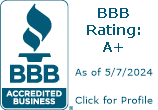HOME INSPECTION CLEVELAND OHIO
At that time, a wood roof could boast a longer life than the 20-year "comp" and greater texture and curb appeal. A wood shake roof also tended to blend in well with the trees and grassy hills where upper-end homes were located.
The useful life of a wood shake roof is between 25 and 30 years.
Signs that a roof is worn out are leaks, which fortunately you may not have; missing shakes; and visible deterioration of the shakes - they appear thinner and just worn. Cracks in the shingles are also a sign of age but do not necessarily mean the roof needs replacement.
You might consider getting a professional opinion. To do so contact a licensed roofer and ask that he come out and take a look. If you know a real estate broker, ask for a referral. There shouldn't be a charge for this, but if the roofer says you need work, get a second and even a third opinion and price quote if necessary.
If you do decide you need a new roof, we would not recommend you re-roof with wood.
For us the bottom line is that wood shakes are a fire hazard. Besides, there are a number of attractive alternatives that are less costly and have an equal or greater useful life.
Composition roofing has improved greatly over the years both in looks and longevity. Architectural-grade composition roofing comes in a multitude of colors and is rated to last up to 40 years. If your shake roof was applied over skip sheeting (1-by-4s placed with a 4-inch gap between boards), you will have to install new plywood or OSB sheeting. That will increase the cost, but it still should be less than a new shake roof.
Two words of warning: First, it is often recommended that a wood roof be treated with wood preservative or oil to prolong its life. We do not recommend you have this done, but for reasons other than those you might suspect.
Besides age and weather, the biggest threat to a wood shake roof, especially an older, brittle shake roof is foot traffic. Preservatives or oils are sprayed on by workmen who must walk on the roof to apply the material. Their footsteps risk cracking the shakes and increase the risk of a leaky roof.
Second, when you decide to re-roof, check with the local building department. Wood roofs may not be allowed because of their inherent fire danger.



